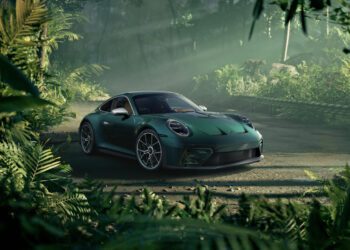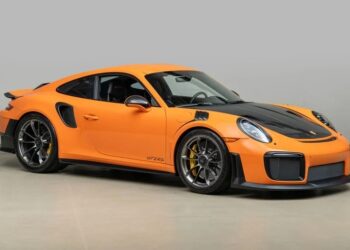The Porsche 356 is one of the first production cars built by Porsche between 1948 and 1965. The original Porsche 356 price in 1948 for the coupe was about $3,750, and the cabriolet cost just $500 more. These days, a Porsche 356 coupe in good condition can fetch over US $75,000-100,000, with a convertible in collectible condition selling for half a million dollars or more.
The Porsche 356 was for sale as a 2-door coupe, as the 356 convertible, and a 2-door roadster. Well-loved in the coupe and open-top variations, the Porsche 356 has consistently garnered praise as a lightweight and agile, rear-engine, rear-wheel-drive vehicle. During the first two years of production, starting in 1948, 60 Porsche 356s were built by hand in Austria. The production plant then relocated to Stuttgart, Germany, where the rest of the Porsche 356s were manufactured.
Of the 76,000 Porsche 356S produced, some estimates say that approximately half of these sturdy cars survive. Almost half of those vehicles made it to America, and 40% of those wound up in California.
The Porsche 356 remains a highly collectible specimen. Many earlier models may lack air conditioning and modern safety equipment. Still, they are excellent vintage race cars that are reliable and quite fast compared to other vehicles of that class. Most working Porsche 356 vehicles will get good gas mileage and manage to keep up with freeway traffic fairly easily.
These bathtub Porsches—as they are called since they resemble upside-down bathtubs—have quite a storied history as the beginning of the Porsche production legacy. Perhaps that’s why they have managed to retain their value so well over the past 60-70 years. After all, they’ll cost at least as much as a new Porsche 911 in today’s market.

Porsche 356 Review
The Porsche 356 reviews are highly favorable. Throughout production, the Porsche 356 was available as the first-generation 356, then the A (1955-1959), B (1959-1963), and C (1963-1965/66) types until they were phased out in favor of the Porsche 901 (later 911) line.
Porsche designed the 356 with performance in mind. By refining the engine from mid-rear to its eventual rear placement, and tweaking design elements, the 356 was lighter and faster than many of its contemporaries. As the 356 was further refined for performance, it shared fewer parts with its sister car, the Volkswagen Beetle.
1958 Porsche 356A Review by Jay Leno & Jerry Seinfeld
Ferdinand Porsche, the son of the founder of the German Porsche company, believed that it would be more fun to drive a small car with more power than a big one with more power, which is the premise of the 356. The vehicle quickly became well known for its aerodynamics, handling, and excellent build quality. It rapidly gained popularity on both sides of the Atlantic.
Open-top 356s are the most fun. The 356 cabriolets are undoubtedly the most luxurious, while the Porsche 356 Speedster for sale has a reputation for being faster and lighter. The main critique is that the 356 is quite prone to rust, especially along the undercarriage in wet or regularly salted locales.
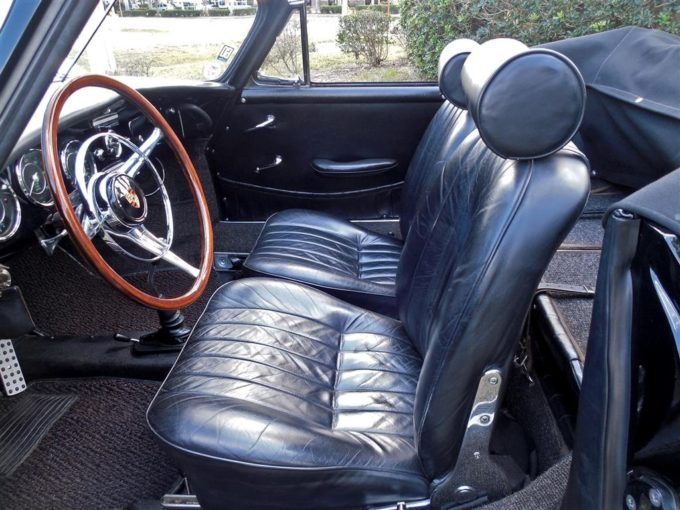
Porsche 356 Specs
Porsche 356 specs are pretty impressive, especially for its time. Thanks to a powerful engine located at the rear of the vehicle, Porsche 356 horsepower on the early 1948 variations starts at 40 hp. The final 356 coupe version in 1965 is rated for up to 130 bhp at 5000rpm with 86 lb-ft of torque. The thin, lightweight aluminum, later steel body and chassis, and eye-catching aerodynamics made the 356 a winning formula with a curb weight of 2059 lbs for the 1963 coupe. A 1951 Le Mans win helped to cement the 356’s legacy as its popularity continued to spread.
Porsche 356 top speed is capped at around 107 mph, and the Porsche 356 0-60 is just 13.5 seconds, at least on the 1963 coupe. This means that it can achieve an estimated quarter-mile drag time of just over 19.2 seconds with a trap speed of 71.2 mph, thanks to a four-speed manual gearbox that delivers power through a relatively stable and sophisticated RWD system.
The 356 spans significant growth and progress of the Porsche evolution. Consequently, the power and performance steadily improve throughout production, with several engines and carburetors continuing to dramatically enhance performance over time.
Porsche 356 Specs:
- Price: $ 3,750
- Engine: 1.6-liter Flat Four
- Transmission: 4-speed Manual
- Horsepower: 130 hp
- Torque: 86 lb-ft
- 0-60 mph: 13.5 seconds
- 1/4-Mile: 19.2 Seconds @ 71.2 mph
- Top Speed: 107 mph
- Weight: 1,351 lbs
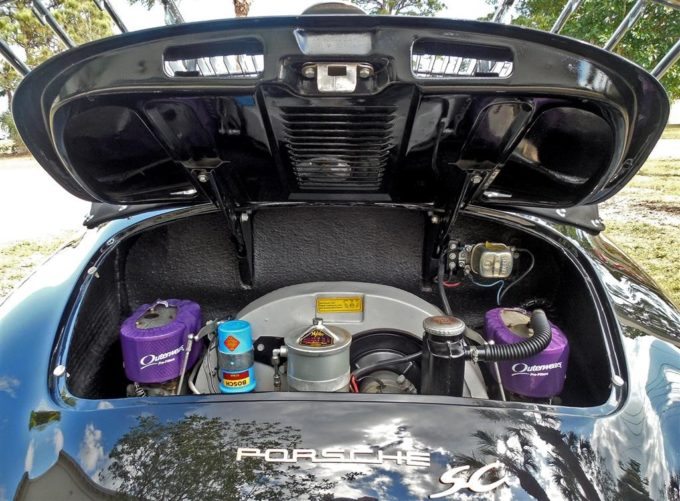
Porsche 356 Engine
The original Porsche 356 engine on the Gmund variation built in Austria when these first hit the production line came with a single engine option rated for 40 bhp and displaced 1100cc. The Pre-A version of the 356 used an engine that required a VW-sourced two-piece crankcase while in production until November 1954 when it started using a Porsche-designed three-piece crankcase. Those engines displaced 1.1L, 1.3L, and 1.5L, putting out anywhere from 40-70 bhp. The first America roadster (built in 1952) had a 1300cc motor and the other 16 sported powerful 70-hp 1.5L Super flat-four engines.
In 1955, a 100-hp four-cam Carrera motor was introduced. By 1958, all pushrod motors in the 356 were 1.6L, including the most powerful Carrera that created 115hp. The last of the 356s, called the C and SC models, made the transition from the 356B Super 90 engine (introduced in 1960). Thanks to new twin-throat carburetors, the Carrera 2 engines on the SC models made 95-130 hp.
Porsche 356 Transmission
These engines powered a durable Porsche 356 4-speed manual transmission that was simply designed from sturdy components and built to withstand the tests of time. Designed as a transaxle, the output shafts are ahead of the gearbox, making the case a load-bearing member of the rear suspension. An integrated bell housing contained the clutch kit and supported the starter. Popular upgrades include a newer 5-speed gearbox along with more aggressive differential ratios. Perhaps the best feature of the Porsche 356 transmission is its reliability. Able to easily handle twice the engine’s output, it was a popular upgrade for other rear-engine cars.
Porsche 356 “No. 1” Roadster Tours The World
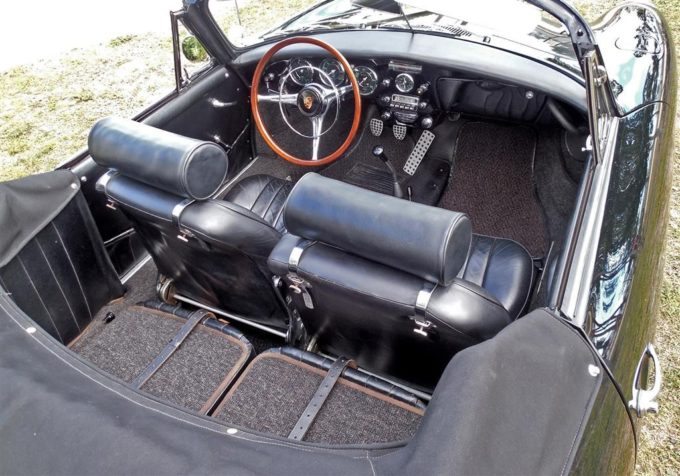
Porsche 356 Interior
Driving a Porsche 356 is relaxing thanks to a symmetrical cockpit. The Porsche 356 interior has gauges that are logically located in the driver’s line of sight, properly spaced pedals, and even an AM radio on well-equipped models. The windows are manual, as are the locks, ignition, wipers, and every other feature. This is how the Porsche 356 interior doesn’t weigh the car down. This is clearly evident when driving a Speedster or Cabriolet, as they have a perfect power-to-weight ratio.
Porsche 356 Models
Porsche 356s built between 1948–1955 are called the “pre-A” type. The earliest 50 manufactured in Austria are referred to as Gmünd models. These 1.1L sports cars quickly evolved into 1.3L and 1.5L-engined cars. This generation of 356 was typified by the split windscreen replaced by a single windshield with a V-shape in 1952.
The rare, coveted Porsche Continental was designed towards the end of the pre-A days. The sole American importer convinced Porsche to develop a stripped-down roadster with basic equipment and a cut-down windscreen for the American market. Ford quickly sued for rights to the Continental name, which was quickly changed to the “European” 356 for the following model year.
Porsche 356 A
The Porsche 356 A was in production from 1955–1959. These are further divided into Type 1, and Type 2 (1957-1959) stages amongst enthusiasts. The 356 A was available with 1.3, 1.5, and later 1.6 Carrera engines. The most common option was the 4-cylinder boxer air-cooled engine coupled with dual downdraft Zenith carburetors.
The powerful 1.6L four-cam Carrera engine capable of 115 hp was first offered in the iconic Speedster, a spyder race car. From that point, the 356 was only offered with a 1.6L engine. The 356A also marked significant handling improvements thanks to improvements in the suspension.
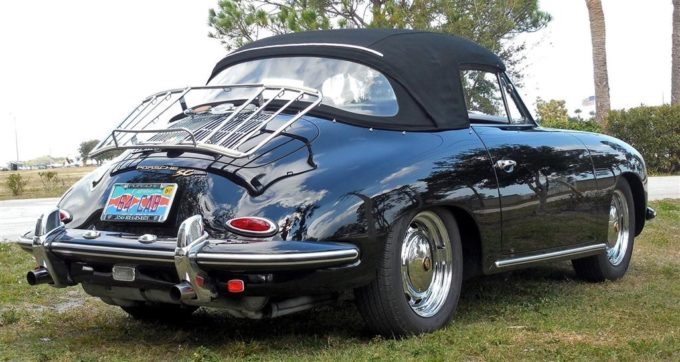
Porsche 356 B
From 1959–1963, the Porsche 356 B got a significant facelift. Models produced in the Porsche 356 B-era are the T5 and T6 body styles, featuring raised headlights, and re-contoured and raised bumpers on the front and back of the car. The T6, introduced at the end of 1961, had a newly squared-off hood, a larger windshield, and the rear lid now sported twin grilles.
Porsche continued to improve handling and offered new, annular disc brakes. The 1960 356 Carrera 1600GT coupe produced a whopping 134 hp, and in 1962, a 2.0L four-cam flat-four Carrera 2 made 130hp. The notchback style—a cabriolet with a welded hardtop) was only offered during this period of the 356.
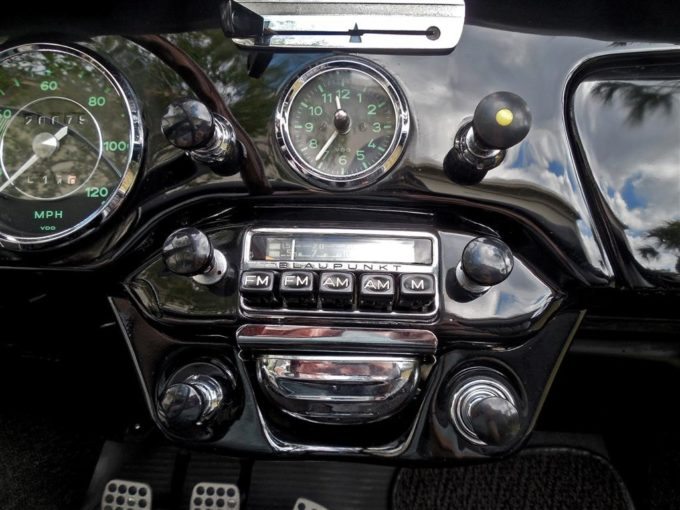
Porsche 356 C
July 1963–1966 was the end of the 356 production run, culminating in the Porsche 356 C and SC models. The Porsche 356 C was only offered as coupes and cabriolets. More powerful Carrera 2.0L and SC engines relied on twin-throat Solex carburetors to put out up to 130 hp. The plain C used reliable Zenith carburetors to achieve the same 75 hp as the Super engine in the B-era. Disc brakes marked the only significant visible change to the 356, distinguishing the C. The last 10 356 cabriolets were built for the Dutch police in March of 1966.
Porsche 356 Standout Features
Ferdinand Porsche was arrested in 1945. France charged him with war crimes in an effort to extort money from German companies. In order to pay his father’s ransom, Ferry Porsche and a small team built the first Porsche 356 examples from aluminum in a small Austrian sawmill. The “Pre-A” cars were used to sell dealers on the idea of a Porsche production car, with the franchise fees and deposits going to free the old man. Once he was free, Ferdinand watched over his family as they moved to Stuttgart, and their name become recognized as Germany’s premier sports car manufacturer.
Sell My Porsche: Get a cash Offer





